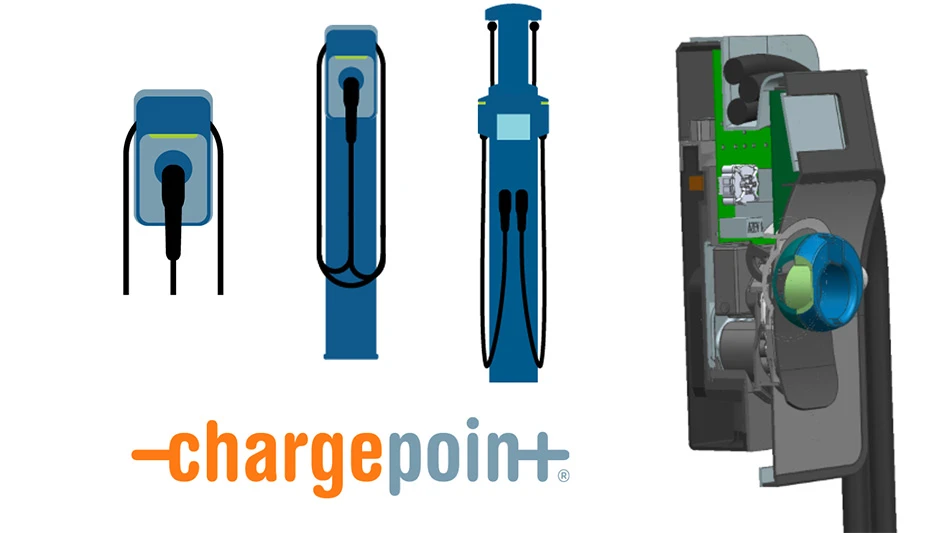
BrightDrop
FedEx Express Canada welcomed its first 50 BrightDrop Zevo 600 electric delivery vehicles at an event in Toronto attended by the Hon. Victor Fedeli, Member of Provincial Parliament (Nipissing) and Minister of Economic Development, Job Creation and Trade, Julie Dabrusin, Member of Parliament (Toronto-Danforth) and Parliamentary Secretary to the Minister of Environment and Climate Change and to the Minister of Natural Resources, FedEx customers, and FedEx team members from the company’s Downtown Toronto operations. The introduction of BrightDrop’s electric vans into the FedEx fleet in Canada is an important step in the company’s goal to transform its entire parcel pickup and delivery (PUD) fleet to all-electric, zero-tailpipe emissions vehicles by 2040.
This initial fleet of 50 electric vehicles (EVs) will service Toronto, Montreal, and Surrey. FedEx Express Canada plans to expand its EV fleet footprint as additional charging infrastructure is implemented at FedEx locations across the country. Powered by General Motors’ (GM) Ultium Platform, the Zevo 600 is designed for last-mile deliveries, with an estimated range of up to 400 kilometers on a full charge. These 50 EVs are part of a larger agreement between FedEx and BrightDrop that will see FedEx incorporate 2,500 total vehicles across FedEx operations in the coming years, including more than 400 vehicles that are already in operation in Southern California. To support the new vehicle technology, FedEx is installing charging infrastructure across its Canadian facilities, including the 80 charging stations the company has already installed in these three EV launch markets.
“FedEx Express Canada is proud of the role we’re playing to help our company work toward the goal of carbon neutral operations globally by 2040,” says Dean Jamieson, vice president of operations at FedEx Express Canada. “Working with companies like BrightDrop that are helping to build these solutions, right here in our own backyard, shows how Canada is helping to bring more sustainable solutions to life across a variety of industries.”
Assembled in Canada, these light commercial vehicles help to advance FedEx Express—a subsidiary of FedEx Corp., one of the world’s largest express transportation companies—on its journey toward an all-electric delivery fleet. The company plans for 50% of its global PUD vehicle purchases to be electric by 2025, rising to 100% of purchases by 2030.
BrightDrop is manufacturing the Zevo 600s at GM’s CAMI Assembly plant in Ontario. GM invested nearly one billion Canadian dollars to convert CAMI into Canada’s first large-scale EV factory. CAMI reopened in December 2022 with the first Zevo 600 rolling off the assembly line after a seven-month retooling, the fastest plant conversion in GM’s history.
“FedEx is a key collaborator in our journey to help reduce carbon emissions for deliveries,” says Steve Hornyak, chief commercial officer at BrightDrop. “As our first customer to deploy Zevos in the U.S. and Canada, FedEx is showing the world how the addition of electric vehicles can help achieve ambitious sustainability goals and improve the communities we live and work in.”
Canadian Efforts, Global Impacts
Just over two years after announcing its global target of achieving carbon-neutral operations by 2040, FedEx Corp. is working to deliver on that goal—thanks in part to local efforts spearheaded by FedEx Express Canada, which has been collaborating on testing other solutions to reduce its footprint in crowded urban centres, with the goal of helping to bring these innovations worldwide. Canada has one of the largest e-cargo bike fleets in the FedEx global network, with more than 40 e-bikes operating in British Columbia, Alberta, Ontario, and Quebec. It has also been piloting innovations like the BrightDrop Trace Move, an electric cart to assist couriers, in Toronto.
To advance the shared journey toward a more sustainable future, FedEx has invested in sustainability initiatives supporting Canada’s clean energy transition alongside conservation efforts in local communities. Charitable investments to the Pembina Institute, Tree Canada, and Ecotrust Canada help these organizations continue their critical work.
“We know that the future of the planet is top of mind for a significant number of consumers, and we want to do our part to operate more sustainably,” says Jamieson. “Investments like these will help us deliver lasting environmental benefits to our customers, our team members, and our planet.”
Latest from EV Design & Manufacturing
- Lucid to acquire select facilities and assets from Nikola Corp.
- CNC coordinate measuring machine for large parts, complex applications
- Battery with built-in fire extinguishing technology moves electric vehicle safety forward
- Axial flux motor accelerates e-mobility
- MARBEL project develops modular, eco-friendly electric vehicle battery
- ChargeTronix releases distributed EV charging system, third-generation chargers
- US electric vehicle sales start off strong in first quarter of 2025
- SES AI launches battery material discovery software and service platform





